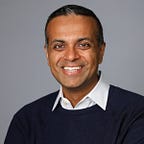Presidential Leadership — Part 2
For the past few years, I have been reading biographies of the US Presidents in chronological order. I started doing this to read more, but also to learn more about US history and presidential leadership.
Four years ago, I posted insights from Part 1 of my journey, which spanned the first 15 Presidents. I started in 1788 (Washington’s election) and ended in 1860 (Buchanan leaving office). This post is Part 2 and I will start with Lincoln (elected in 1860) and end with Coolidge (left office in 1928).
Note: A number after the name of a President signifies their number in the order. E.g., Abraham Lincoln (16)
A changing America. This is often seen as a relatively dull period of Presidential leadership (#s 19–25 were Hayes, Garfield, Arthur, Cleveland, Benjamin Harrison, McKinley). Not exactly household names these days. However, they presided over a rapidly changing America. The embers of the Civil War still hung over the South with Reconstruction and over the North with major questions about the role of African Americans in society. Over this period, some African Americans started to get an education, gather wealth, and become political leaders, but for the large part, the legacy of slavery still held them back. I reflect on Joe Biden’s remarks at Gettysburg in October 2020 saying, “I think about what it takes for a Black person to love America. That is a deep love for this country that has for far too long never been recognized.”
A changing world. At the start of the 1860s, America was largely an inward facing nation. We were protected by natural borders, had abundant natural resources, and were benefitting from the significant influx of immigrants from around the world. However, over this period — starting in the 1890s — America started to look outward and to embrace what we know as its role today, a global superpower. But it wasn’t all smooth sailing. Even as World War I broke out across Europe and American interests (e.g., ships, businesses) were being affected, Woodrow Wilson kept the nation out of war. In fact, his entire campaign for re-election was based on the fact that he kept America out of the war. After Wilson’s term (and the end of World War I), Harding campaigned and easily won on an “America First” platform promising Americans a return to our own domestic issues.
A changing face of partisanship. In the prior post, I talked about partisanship becoming a stronger force. In this phase of Presidential leadership (1860 to 1928), the Republicans came to dominate. Republican Presidents were in the White House for 48 out of the 68 years. The North/South dynamics also flipped. In Part 1, 13/15 Presidents were from the South. In Part 2, 14 out of 15 were from the North or West. This reflects the challenge the South faced in rebuilding economically and restoring credibility politically. Not until Harry S Truman did a southern President make it to the Oval Office, a full 75 years after Andrew Johnson, the last southern President.
A changing definition of Presidential leadership. Perhaps the greatest insight for me has been the changing concept of Presidential leadership. When I think about the terms of Hayes, Garfield, Arthur, Cleveland, Taft, Coolidge etc., I hardly get the impression of a strong executive branch with a strong leader. Many of these men were unremarkable and unexceptional until fate placed them among a select group (i.e., some were compromise candidates at conventions, some were selected as Vice Presidents to balance the ticket only to be elevated upon the death of the President). The obvious exceptions to this generally unremarkable group are Lincoln, Roosevelt, and Wilson. I spent 35 months on these three men alone!
A new phase starts. Coolidge (30) is a fitting end to the second phase of American Presidents. He was the product of an old era leading a rapidly changing America on the precipice of the Great Depression and World War II. He was the last President not to fly in an airplane and grew up in rural America when cities were rapidly electrifying. The world was changing quickly and increasingly looking to America to play a bigger role. He was one of the last Presidents to never have traveled overseas (with the exception of a brief trip to Havana).
As the third and final phase of my project starts, I’m excited to enter the “Golden Age” of Presidents…FDR, Truman, Eisenhower, etc. America’s role in the world, along with this country’s battle with civil rights, are all going to feature prominently over the next 70–80 years. More to come!
